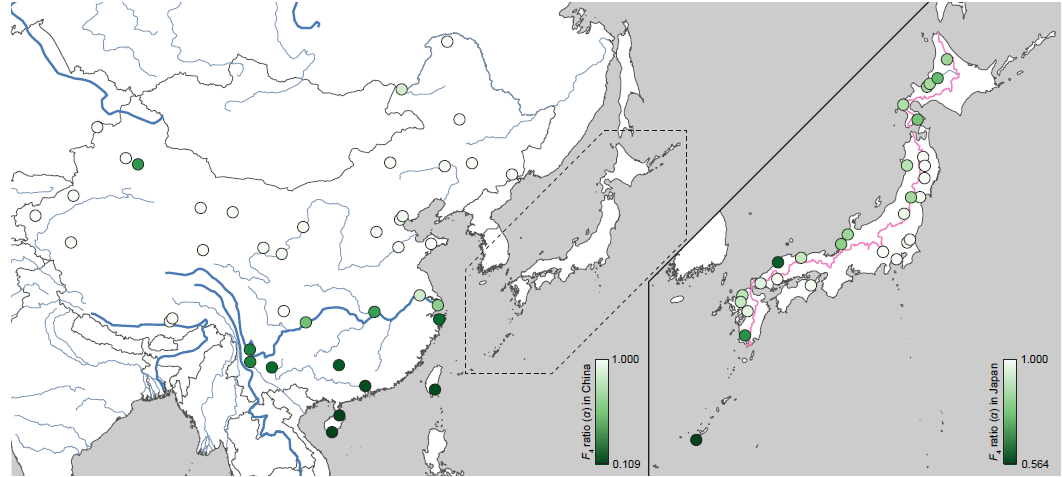2024-04-16 ワシントン大学セントルイス校
<関連情報>
- https://source.wustl.edu/2024/04/alzheimers-disease-progresses-faster-in-people-with-down-syndrome/
- https://www.thelancet.com/journals/laneur/article/PIIS1474-4422(24)00084-X/abstract
ダウン症と常染色体優性アルツハイマー病におけるタウの拡散の比較:横断研究 Comparison of tau spread in people with Down syndrome versus autosomal-dominant Alzheimer’s disease: a cross-sectional study
Julie K Wisch, PhD ;Nicole S McKay, PhD;Anna H Boerwinkle, BS;James Kennedy, PhD;Shaney Flores, MS;Prof Benjamin L Handen, PhD;et al
The Lancet Neurology Published:May, 2024
DOI:https://doi.org/10.1016/S1474-4422(24)00084-X
Summary
Background
In people with genetic forms of Alzheimer’s disease, such as in Down syndrome and autosomal-dominant Alzheimer’s disease, pathological changes specific to Alzheimer’s disease (ie, accumulation of amyloid and tau) occur in the brain at a young age, when comorbidities related to ageing are not present. Studies including these cohorts could, therefore, improve our understanding of the early pathogenesis of Alzheimer’s disease and be useful when designing preventive interventions targeted at disease pathology or when planning clinical trials. We compared the magnitude, spatial extent, and temporal ordering of tau spread in people with Down syndrome and autosomal-dominant Alzheimer’s disease.
Methods
In this cross-sectional observational study, we included participants (aged ≥25 years) from two cohort studies. First, we collected data from the Dominantly Inherited Alzheimer’s Network studies (DIAN-OBS and DIAN-TU), which include carriers of autosomal-dominant Alzheimer’s disease genetic mutations and non-carrier familial controls recruited in Australia, Europe, and the USA between 2008 and 2022. Second, we collected data from the Alzheimer Biomarkers Consortium–Down Syndrome study, which includes people with Down syndrome and sibling controls recruited from the UK and USA between 2015 and 2021. Controls from the two studies were combined into a single group of familial controls. All participants had completed structural MRI and tau PET (18F-flortaucipir) imaging. We applied Gaussian mixture modelling to identify regions of high tau PET burden and regions with the earliest changes in tau binding for each cohort separately. We estimated regional tau PET burden as a function of cortical amyloid burden for both cohorts. Finally, we compared the temporal pattern of tau PET burden relative to that of amyloid.
Findings
We included 137 people with Down syndrome (mean age 38·5 years [SD 8·2], 74 [54%] male, and 63 [46%] female), 49 individuals with autosomal-dominant Alzheimer’s disease (mean age 43·9 years [11·2], 22 [45%] male, and 27 [55%] female), and 85 familial controls, pooled from across both studies (mean age 41·5 years [12·1], 28 [33%] male, and 57 [67%] female), who satisfied the PET quality-control procedure for tau-PET imaging processing. 134 (98%) people with Down syndrome, 44 (90%) with autosomal-dominant Alzheimer’s disease, and 77 (91%) controls also completed an amyloid PET scan within 3 years of tau PET imaging. Spatially, tau PET burden was observed most frequently in subcortical and medial temporal regions in people with Down syndrome, and within the medial temporal lobe in people with autosomal-dominant Alzheimer’s disease. Across the brain, people with Down syndrome had greater concentrations of tau for a given level of amyloid compared with people with autosomal-dominant Alzheimer’s disease. Temporally, increases in tau were more strongly associated with increases in amyloid for people with Down syndrome compared with autosomal-dominant Alzheimer’s disease.
Interpretation
Although the general progression of amyloid followed by tau is similar for people Down syndrome and people with autosomal-dominant Alzheimer’s disease, we found subtle differences in the spatial distribution, timing, and magnitude of the tau burden between these two cohorts. These differences might have important implications; differences in the temporal pattern of tau accumulation might influence the timing of drug administration in clinical trials, whereas differences in the spatial pattern and magnitude of tau burden might affect disease progression.
Funding
None.



